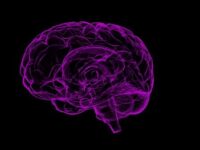Inconspicuously, house keys and the location of home dissipates from memory. Progressing further along, even the familiar faces of loved ones fade out of recollection. The most common form of dementia, Alzheimer’s disease, is the sixth leading cause of death in the U.S. This neurodegenerative disorder primarily affects the cognitive functioning responsible for retrieving, storing, and processing information. Common symptoms of Alzheimer’s include the gradual inhibition of memory along with judgment-making capabilities of even the simplest of tasks. This disease primarily affects those over the age of 65. A reported one in three people of this age will pass away with Alzheimer’s or other forms of dementia. Magnetic Resonance Imaging (MRI) scans reveal that Alzheimer’s appears in the form of protein plaques and neurofibrillary tangles, which serve as the main physical features of Alzheimer’s disease identification.
The initial stage of the disease is known as preclinical Alzheimer’s disease, during which there are no noticeable changes in the individual’s behavior observed by surrounding individuals. Clinical procedures including biomarkers and genetic tests are the only way to detect early symptoms of Alzheimer’s, including protein accumulation. As the disease progresses, patients approach the stage of mild dementia, which is characterized by minuscule changes in personality including increased aggression and motivational decline. Furthermore, individuals may lose memory and forget personal details including their phone number or address. Severe dementia is seen as the final stage, in which “negative spillover-effects” are seen in other aspects of the body including the impairment of motor abilities and an inability to coherently converse, as well as significant memory loss and drastic altercations to personality. For years, scientists have sought to find a cause of this disease, but finding direct links to any known cause (aside from heritability) is difficult.
“Some researchers have wondered whether environmental factors may contribute to the emergence of Alzheimer’s.”
Some researchers have wondered whether environmental factors may contribute to the emergence of Alzheimer’s. Studies in mice have shown that particulate matter from the atmosphere that enters the brain has caused biological changes that may serve as indicators of Alzheimer’s. In 2016, a research team from Mexico City and Manchester, England, discovered that particulates could penetrate the brain by way of the bloodstream or through the nose lining. Positron emission tomography (PET) scans revealed that particulate matter accumulates inside protein deposits found within the brain. Protein deposits, known as amyloid plaques, are the primary indicator of Alzheimer’s.
In response to this finding, researchers conducted experiments on transgenic mice to detect the effects of chronic low-level particulate matter exposure on the pathological accumulation of amyloid protein. Separated into two groups, the exposure group underwent five months of exposure, which led to fascinating results. Even at low concentrations, particulate matter exposure could still cause chronic conditions leading to morbidity. In addition, amyloid protein was found in several subcortical regions including the optic tract, which implied that particulates entered the body through multiple pathogenic pathways resulting in Alzheimer’s.
“Despite the fact that the underlying mechanisms of Alzheimer’s remain shrouded in mystery, this neurodegenerative disorder has garnered increased attention within the scientific community in recent years.”
Although there is no known cure for Alzheimer’s disease, some drugs that have been approved by the FDA may help with symptom management and temporarily slow the spread of Alzheimer’s. Galantamine and rivastigmine are examples of drugs that act as cholinesterase inhibitors, which prevent the breakdown of acetylcholine, a chemical essential for the functioning of cognitive processes. Furthermore, these drugs are only able to target the earlier stages of Alzheimer’s and are useless in the stage of severe dementia.
Despite the fact that the underlying mechanisms of Alzheimer’s remain shrouded in mystery, this neurodegenerative disorder has garnered increased attention within the scientific community in recent years. By taking action in our everyday lives to reduce particulate matter exposure, great gains can be made through consistent efforts, no matter how significant. Hopefully, in the future, more long-lasting solutions to remedy Alzheimer’s disease will continually be discovered and become accessible to the vulnerable demographic in need of specialized care and assistance.
Image courtesy of Wikimedia Commons






